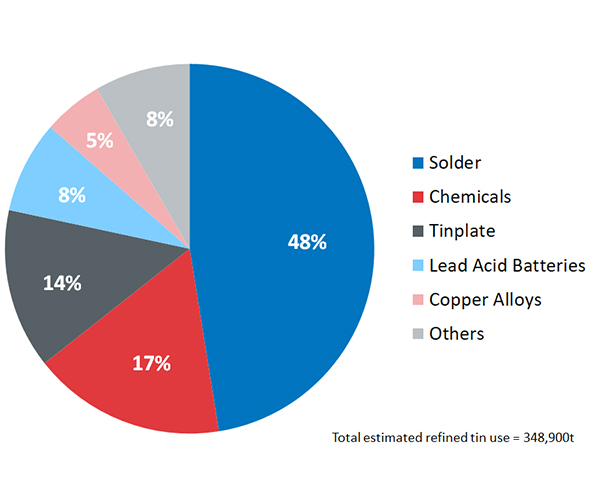Tin has been in use since ancient times and it play an important role in the history of human race. The earliest application of tin was as an addition to copper, as it was found to confer upon this metal a greatly increased hardness which secured for the first time a really effective material for the production of a wide range of tools and weapons. This was such a basic cause of important advances in man’s development over nearly 2,000 years that this period is invariably referred to as the Bronze Age.
With the development of technology, tin can be process into different forms, and became more and more demand for thousands of essential and innovative uses right through to the modern age. For the moment, tin mainly used in electronic solders, tin chemicals, tinplate and lead-acid batteries and so on.
From the above chart, the solder sector (for both electronic and industrial uses combined) remains the biggest single consumer of refined tin, representing 48% of global use in 2016.
Tin use in chemicals has remained the second largest market for refined tin in 2016 for the third year. Tin usage growth in chemicals applications is expected to outperform tinplate again in 2017, although to a lesser degree.
Other tin application include bronze and brass, bearing metals, pewter and even superconductors, each of which might be found as components in a multitude of consumer and industrial products. Tin is also essential for the process of making float glass, in which molten glass is floated on the surface of molten tin, thereby creating a sheet of uniform thickness and with a very flat surface.
2016 Global tin use ba application


